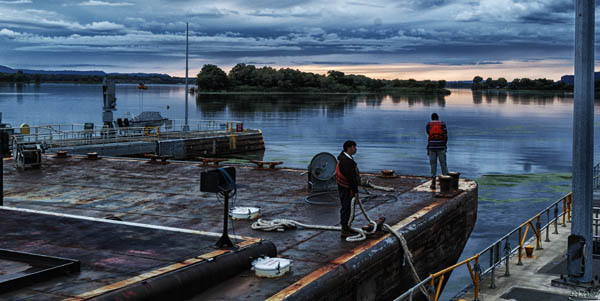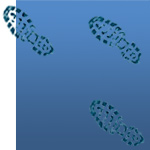|
Wandering Wisconsin's magnificent
Apostle Islands, I received a request from home for a blog with more
photography tips. She suggested comparing aperture/shutter priority, mastering
depth of field, macro photography, and a few more, but left the choice to
me.
So it was that I asked Lake
Superior what might be the most important aspect of photography. On the road
alone, I've taken to talking to inanimate objects.
The waves were crashing with
enthusiasm, blasting foam into the sky and shaking the cave where I hid. The
message was to forget all the preliminary preparations and rules that fill most
structured photo books, and just throw yourself at it. Reminded me of how
another friend approached teaching creative writing. Grammar is an afterthought
for her. First, her students have to come up with an inspiring thought and
write it down straight from the head and heart.
For photography, that would be to
jump straight into composition, to compose beauty and wonder within the
confined frame of a photograph. The instructions for the proper settings would
follow. Simple theory, but how exactly do you hunt down and shoot beauty and
wonder?
The quick answer is to surround
yourself with the stuff. National parks are good for that, but so is your
rooftop with a decent sunset. The long answer is a lifelong quest to discover
your own subjective sense of beauty, what touches you deep inside.
This will start from the outside,
perhaps a massive waterfall that takes your breath away, or just as likely the
swirling grain lines of a little juniper tree. But if you close your eyes and
give it a chance, it will arise from within. You will compose in your head the
perfect foreground and just the right viewing angle for the waterfall, or
picture in your mind the perfect leaf to place next to the juniper grain lines.
This is your soul speaking to you. It starts as a whisper, so listen carefully.
Eventually, you will first imagine beauty, and then seek it out with your
camera at your side.
This will be a very personal
experience since we each feel beauty differently. For me, the keyword was
contrasts. Not just the color contrast of foamy water over dark rocks, but also
the contrast of shapeless, dynamic water against solid rock unchanged for
millennia. A young seedling growing amid the roots of a gnarled old tree. A
tiny climber in the distance on the side of an immense cliff. A girl's soft
hand caressing the deeply furrowed bark of a redwood tree.
This pursuit of contrasts led me to
appreciate the dark, that is, soft faint lights on a dark canvas. The appeal
took me by surprise, a sure signal that it came from an unexplored corner of my
insides. I took to adjusting my shots to be darker than normal, and some
photographers pointed out the defect. When this happens to you, as you should
hope that it will, that will be the time to stop listening to me or anyone
else. You will have discovered your inner muse, and the two of you must
continue your adventure.
Of course photography has general
composition rules. The rule of thirds, for example, suggests moving the center
of attention away from the center of the picture and toward one of the corners.
Another suggests drawing the viewer's eye toward the corners with diagonal
lines, and yet another pushes the eye back toward the center with
vignetting.
These rules are not based on human
perception, how the eye works, or any other physical rationale. They're just
collections of how others have defined beauty. Worth an experiment to see if
such rules speak to you, but don't be surprised if your pursuit of stunning
compositions becomes the road to discover your own artistic instinct and
talent.
Yet another case of the camera not
just a device for looking out at the world, but for revealing what is inside
us. |

The ladies of Wisconsin

Barge going through locks on Mississippi

Don't bite into this pear

Fish tales going around

Islands of the mighty
Mississippi

Niagara Cave
 |
| For more pictures of Wisconsin, click here. |
 |
|

